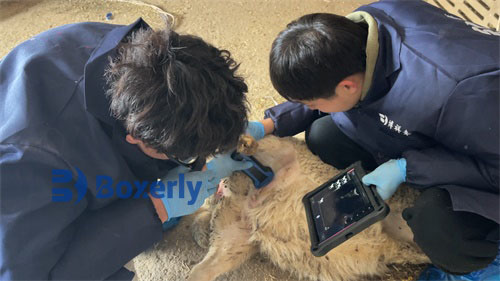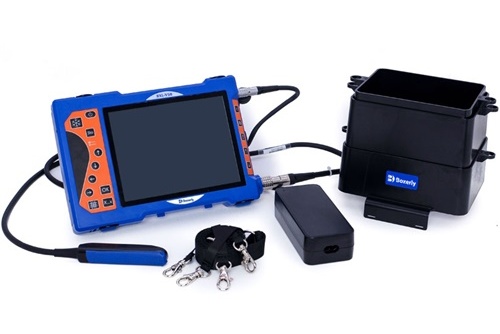The use of ultrasound in veterinary medicine has significantly advanced the way animal diseases are detected, diagnosed, and monitored. Once reserved primarily for human healthcare, this non-invasive imaging technique is now a cornerstone in modern animal health management. From large-scale livestock farms to small animal clinics, veterinarians worldwide increasingly rely on ultrasound to gain real-time insights into internal organs, tissues, and disease processes—without the need for surgery or sedation. This article explores the growing global acceptance and application of ultrasound in diagnosing animal diseases, covering various species, conditions, and clinical benefits.

Understanding How Ultrasound Works in Animal Diagnosis
Ultrasound imaging uses high-frequency sound waves to create visual representations of the inside of an animal’s body. These waves are emitted by a probe and reflect off internal structures like organs, muscles, and fluids. The returning echoes are translated into real-time images, allowing veterinarians to observe the shape, size, and texture of tissues. Unlike radiography or CT scans, ultrasound avoids harmful radiation, making it safe for repeated use—even in pregnant animals or young offspring.
In veterinary practice, B-mode (brightness mode) ultrasound is most commonly used. It produces a two-dimensional grayscale image of soft tissues and fluid-filled structures. Ультразвуковая допплерография, another variation, is used to assess blood flow and vascular conditions. Together, these techniques offer a comprehensive diagnostic toolset applicable across species and disease types.
Applications Across Animal Species
1. Companion Animals (Dogs and Cats):
Ultrasound has revolutionized diagnostic capabilities in small animal medicine. In dogs and cats, it’s commonly used to assess abdominal organs such as the liver, kidneys, spleen, bladder, and gastrointestinal tract. Например, a cat with chronic vomiting might undergo an ultrasound to detect intestinal wall thickening—often a sign of lymphoma or inflammatory bowel disease. In dogs, ultrasound is instrumental in diagnosing pancreatitis, pyometra, and urinary stones.
In cardiac cases, эхокардиография (heart ultrasound) helps evaluate heart function, valve disorders, and fluid around the heart. It is often the go-to diagnostic tool for elderly pets showing signs of fatigue, coughing, or breathing difficulty.
2. Livestock (Cattle, Pigs, Овца, Goats):
In production animals, ultrasound’s role goes beyond reproduction. While it’s still the gold standard for pregnancy diagnosis, its utility in disease detection is growing. Liver fluke infections in cattle, abscesses in sheep, or respiratory diseases in pigs can be monitored using ultrasound. Detecting subclinical diseases—those without obvious signs—is particularly valuable in herd health management, where early diagnosis can prevent widespread outbreaks.
Например, lung ultrasound in calves helps detect pneumonia before clinical symptoms arise. This proactive approach improves survival rates and reduces antibiotic usage, which aligns with global efforts to reduce antimicrobial resistance.
3. Лошадей:
Equine veterinarians use ultrasound extensively in sports medicine and lameness evaluations. Tendon and ligament injuries, common in racehorses and sport horses, can be visualized and monitored throughout the healing process. Moreover, colic—a life-threatening condition—can be quickly evaluated using abdominal ultrasound to identify intestinal blockages or displacements, aiding in rapid decision-making between medical and surgical intervention.

Common Conditions Diagnosed with Ultrasound
Gastrointestinal Diseases:
Ultrasound is effective in detecting blockages, intussusceptions, foreign bodies, and tumors in the intestines. It can also identify fluid buildup or thickened walls, signaling inflammation or neoplasia.
Urinary Tract Disorders:
Bladder stones, kidney cysts, and tumors in the urinary tract are clearly visible via ultrasound. In animals presenting with blood in the urine or difficulty urinating, ultrasound offers a non-invasive way to visualize the problem directly.
Reproductive Disorders:
Ultrasound can detect uterine infections (metritis, pyometra), ovarian cysts, and pregnancy complications. In breeding animals, it allows real-time follicular monitoring and early pregnancy checks, improving reproductive efficiency and timing.
Tumors and Cancer:
Masses in the liver, spleen, or other soft tissues can be evaluated for size, shape, and vascularity. While ultrasound cannot confirm malignancy, it can guide fine-needle aspirations or biopsies for further laboratory testing.
Cardiovascular Disorders:
Echocardiography is essential for diagnosing valve disease, cardiomyopathy, and pericardial effusion. These Сердечные заболевания are common in aging pets and can often be managed better when diagnosed early using ultrasound.
The Global Perspective on Veterinary Ultrasound
Internationally, the adoption of ultrasound in veterinary diagnosis reflects both technological advancement and a shift toward more humane, evidence-based animal care. In the United States, studies show that over 50% of veterinary clinics own at least one ultrasound machine, and nearly half of them perform multiple scans weekly. In Europe and Australia, routine use of ultrasound is now a standard part of diagnostic protocols, especially in high-value livestock and breeding programs.
Asian markets, including China and India, are rapidly adopting portable ultrasound solutions in rural areas, enabling timely disease diagnosis in large herds. Подобным образом, in Latin America and Africa, portable ultrasound systems are helping remote or resource-limited veterinarians improve diagnostic accuracy, often supported by international veterinary aid organizations.
Advantages Over Traditional Diagnostic Methods
1. Real-Time Imaging:
Ultrasound provides immediate visualization, allowing veterinarians to assess organ motion, кровоток, or fetal heartbeat without delay. This is crucial in emergency cases, such as internal bleeding or organ rupture.
2. Non-Invasive and Safe:
Unlike exploratory surgery, ultrasound does not require incisions or anesthesia. Animals experience minimal stress, making it suitable for repeated follow-ups.
3. Рентабельный:
While the initial equipment investment may be significant, the long-term benefits—including reduced diagnostic time, fewer unnecessary treatments, and better outcomes—make ultrasound a cost-effective choice.
4. Mobility:
Modern portable units, such as the BXL-V50, allow veterinarians to perform on-site diagnostics in farms, Зоопарки, or shelters. This flexibility increases access to diagnostic care in underserved areas.

BXL-V50 Portable ultrasound machine
Challenges and Limitations
Despite its benefits, ultrasound has limitations. It is operator-dependent, meaning image quality and interpretation can vary based on the technician’s skill. Also, ultrasound is less effective for examining gas-filled organs like the lungs (except in cases of consolidation) or bony structures, where radiography or CT may be more appropriate.
Another constraint is equipment cost, especially for high-resolution Doppler or color systems. Training and continuous education are also required to maintain high diagnostic standards.
Innovations and the Future of Ultrasound in Veterinary Medicine
Тем future of ultrasound in animal health is driven by ongoing innovation. Wireless probes, AI-assisted image interpretation, and cloud-based diagnostic platforms are already reshaping how veterinarians use this technology. Devices like the BXL-V50 are leading this trend, combining durability, high-definition imaging, and portability into a single solution ideal for mixed-practice veterinarians.
Machine learning is being explored to aid in automatic detection of tumors or fetal anomalies. Telemedicine-enabled ultrasound is also gaining traction, allowing rural veterinarians to share live scans with specialists for real-time consultation.
Заключение
Ultrasound has become a vital tool in diagnosing animal diseases, offering unparalleled advantages in speed, safety, and precision. Whether identifying tumors in cats, lung infections in calves, or ligament injuries in horses, this technology bridges the gap between clinical signs and definitive diagnosis. As the veterinary field embraces digital transformation, ultrasound will play an even greater role in enhancing animal welfare and improving disease outcomes.
For livestock producers, companion animal owners, and equine athletes alike, the integration of ultrasound into daily practice ensures healthier animals, better productivity, and more informed medical decisions. As devices become more accessible and veterinarians become more skilled in ultrasonography, this technology is set to become the global standard in veterinary diagnostics.
Reference Sources:
-
Whitaker, D. A., & Smith, E. (2021). Veterinary Ultrasonography in Food-Producing Animals. Journal of Veterinary Imaging.
-
Beef Cattle Institute. (2023). Use of Ultrasound for Growth Evaluation in Cattle. https://www.beefcattleinstitute.org/ultrasound-growth
-
Villars, J. (2022). Ultrasound Imaging in Small Animal Practice. Veterinary Clinics of North America.
-
American Veterinary Medical Association. (2023). Trends in Veterinary Diagnostic Technology. https://www.avma.org
-
Rantanen, N. W., & Lischer, C. (2020). Equine Diagnostic Ultrasound: From Tendon to Abdomen. Equine Veterinary Education.